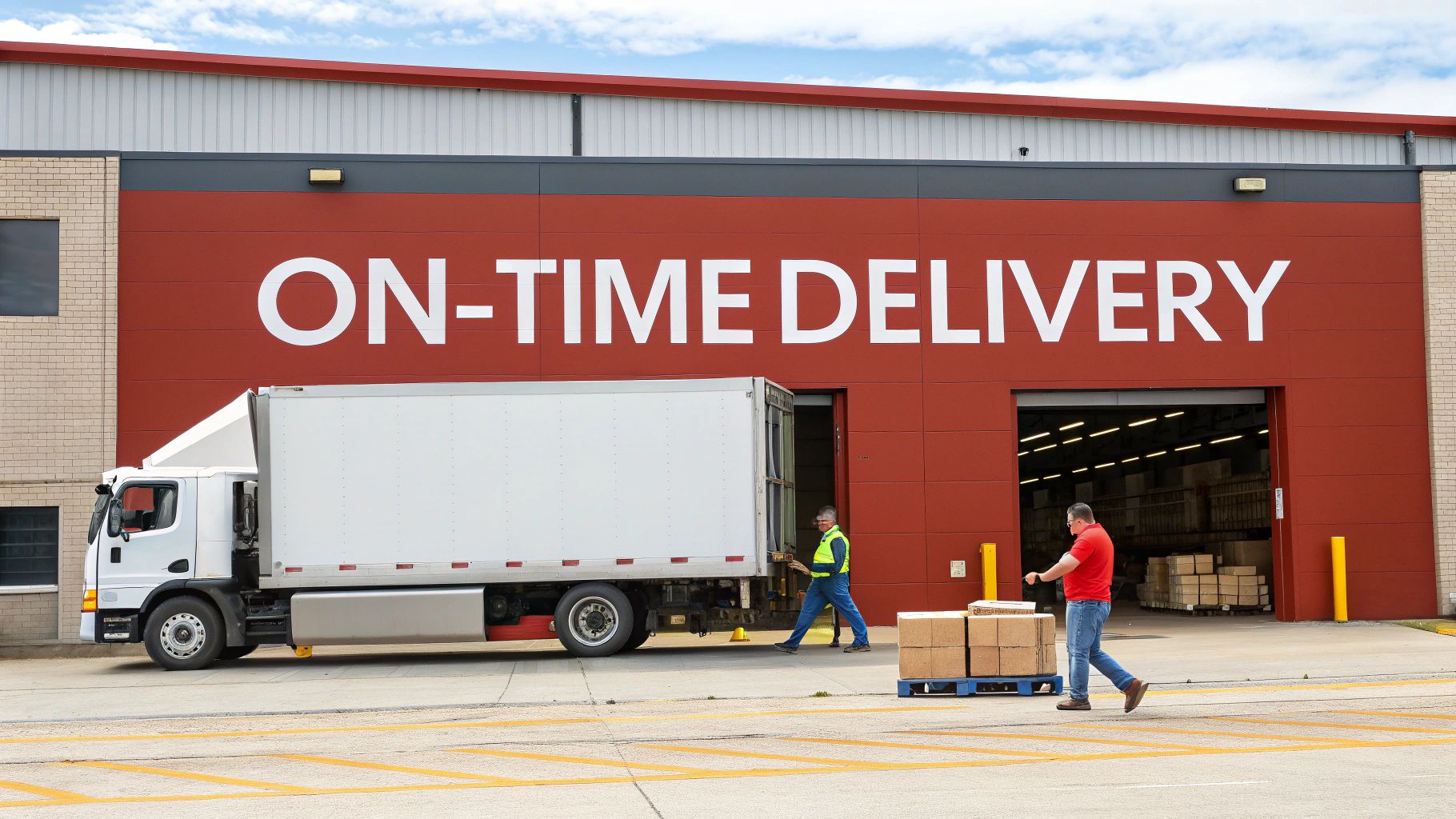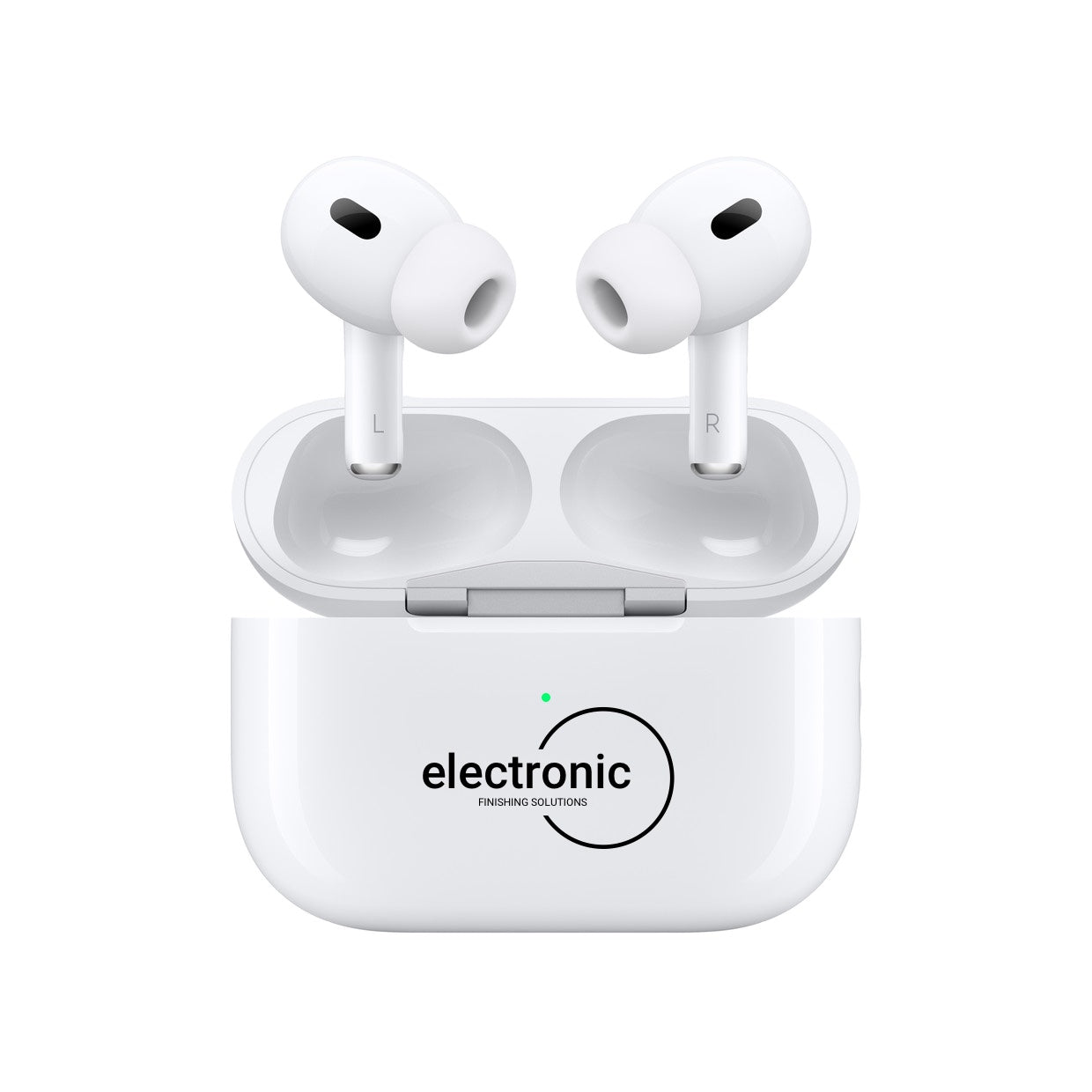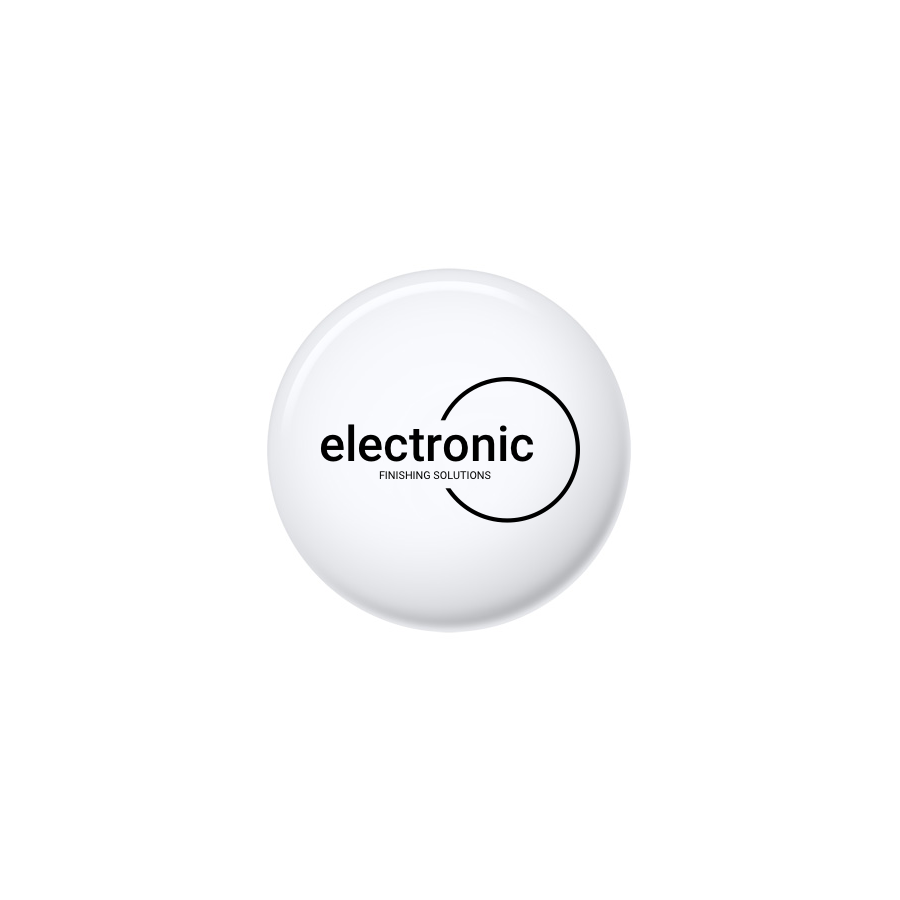Choosing the right suppliers is one of the most foundational decisions you can make in your business. Think of it less as a simple purchase and more like picking a co-pilot for a long-haul flight. The quality of your partners directly shapes everything from your product's final polish to your operational rhythm and, ultimately, your brand's reputation with customers.
A single weak link in that chain can bring production to a screeching halt, send your costs spiraling, and erode the trust you’ve worked so hard to build.
That’s why having a structured, thoughtful way to vet your partners isn't just a "nice-to-have"—it's non-negotiable. The old-school approach of just picking the cheapest option on the list is a surefire recipe for disaster in today's unpredictable market. A slightly more expensive supplier with a rock-solid delivery record and flawless quality control is almost always a smarter long-term bet than a low-cost vendor who constantly throws wrenches into your operations.
Before we dive deep into the specific criteria, let's get a high-level view of the key areas you'll need to assess. This table breaks down the core concepts we'll be exploring.
Key Supplier Evaluation Criteria at a Glance
| Criterion | What It Measures | Strategic Importance |
|---|---|---|
| Quality Management | Consistency, defect rates, and adherence to specifications. | Directly impacts product reliability and customer satisfaction. |
| Cost & Price Competitiveness | Total cost of ownership, not just the initial price tag. | Affects profitability and market competitiveness. |
| Financial Health | The supplier's stability, cash flow, and creditworthiness. | Mitigates risk of sudden disruptions or supplier failure. |
| Delivery & Reliability | On-time delivery rates and order fulfillment accuracy. | Crucial for maintaining production schedules and inventory levels. |
| Risk & Compliance | Adherence to legal, ethical, and environmental standards. | Protects brand reputation and avoids legal entanglements. |
| Technical Capabilities | The supplier's technology, expertise, and production capacity. | Ensures they can meet your technical and volume requirements. |
| Communication & Service | Responsiveness, transparency, and problem-solving ability. | A strong relationship is key to navigating challenges together. |
| Innovation & Partnership | Willingness to collaborate, improve, and grow with you. | Drives long-term value and competitive advantage. |
Think of these criteria as the building blocks for a resilient and high-performing supply chain. Now, let’s unpack what each one really means for your business.
From Checklist to Strategic Function
It’s easy to fall into the trap of treating supplier evaluation criteria as just another checklist to tick off. But that’s a massive missed opportunity. A truly robust evaluation framework is a core strategic function—one that builds resilience, manages risk, and actively fuels your company's growth. It helps you forge true partnerships that deliver lasting value, not just quick, tactical savings.
The real goal here is to move beyond simple purchasing and start building a supplier network that becomes a genuine competitive advantage. Your criteria should be a direct reflection of what your company values most, whether that’s groundbreaking innovation, unshakable ethical standards, or ironclad reliability.
By 2025, procurement leaders widely agree that supplier evaluation needs to be about more than just cost. It must align with bigger corporate goals like sustainability and comprehensive risk management. A truly effective process means defining clear standards, getting everyone on the same page, weighting what matters most, and then gathering the right data to make an informed decision. For more on this, check out these key supplier selection criteria that executives should know.
The Unshakeable Foundation: Cost, Quality, and Delivery
Before you can get fancy with cutting-edge tech or complex risk models, you have to nail the fundamentals. In procurement, everything—and I mean everything—is built on three timeless pillars: cost, quality, and delivery. Get these right, and you have a strong foundation. Get any one of them wrong, and the whole structure can come tumbling down.
These aren't just boxes to tick on a supplier scorecard. They form the core promise between you and your vendor. While people have been haggling over price, workmanship, and timeliness for centuries, what these concepts mean for a modern business is much deeper. A failure in one area almost always causes a painful domino effect across your entire operation.
Cost Is More Than Just the Price Tag
One of the biggest rookie mistakes in procurement is fixating on the sticker price. True supplier evaluation digs much deeper, looking at the Total Cost of Ownership (TCO).
It's like buying a car. You could buy a cheap clunker for a few thousand dollars, but what happens when it's constantly in the shop, guzzles gas, and needs new tires every six months? That "cheap" car ends up costing you a fortune.
The exact same principle applies to suppliers. A low-cost component might feel like a quick win for your budget. But what happens when that part leads to a 20% increase in product failures, a spike in warranty claims, and a flood of angry customer reviews? That "bargain" just became one of your most expensive problems.
A smart cost evaluation always includes:
- Acquisition Costs: This is the upfront price you pay for the goods or services.
- Operating Costs: Think about the expenses to actually use the product—things like energy consumption, employee training, or ongoing maintenance.
- Lifecycle Costs: What will it cost you down the road? This covers disposal fees, replacements, or future upgrades.
The Real Meaning of Quality and Delivery
When we talk about quality, we're not talking about perfection. We're talking about unwavering consistency. A supplier who delivers parts that meet your exact specifications every single time is worth their weight in gold. That reliability is what prevents expensive production mistakes, slashes waste, and most importantly, protects your customers from getting a shoddy product.
Then there's delivery performance—the third critical pillar. This is all about rock-solid reliability that keeps your operations humming along without any nasty surprises. A supplier who constantly misses deadlines can bring your entire production line to a screeching halt. Suddenly, you're the one breaking promises to your customers. On-time delivery isn’t a nice-to-have; it's the baseline requirement for any functional supply chain.
These three elements—cost, quality, and delivery—are completely intertwined. A weakness in one is almost always a red flag for problems in the others. They are the core of effective supplier management.
This isn't a new idea, either. A foundational study from way back in 1966 looked at over 20 different attributes that purchasing managers cared about. The results were overwhelming: cost, quality, and delivery performance were the undisputed champions. That research set the stage for the multidimensional way we look at supplier selection today. If you're a history buff, you can dig into the evolution of these logistics and supply chain management concepts for some extra context.
Evaluating Suppliers for Today's Volatile World

For decades, the foundation of any solid supplier relationship rested on three pillars: cost, quality, and delivery. But today, relying on those alone is like using an old paper map to navigate a modern highway. You might get there eventually, but you'll miss the new express lanes, detours, and shortcuts that could make or break your journey.
The world is simply more interconnected and unpredictable than ever before. To build a business that can weather any storm, your supplier evaluation criteria must be broader and far more strategic. This means looking beyond the simple transaction to size up a supplier’s overall stability, their appetite for innovation, and their ethical backbone. These factors aren't just "nice-to-haves" anymore—they're central to your long-term success.
Fortifying Your Business with Risk Management
Risk is no longer a fringe concern that you tack on at the end of an evaluation. It's a core pillar. A supplier's internal problems can very quickly become your external crises, and you're the one left cleaning up the mess.
Imagine you’ve just partnered with a key manufacturer, only to discover they have shaky financials and are teetering on the edge of bankruptcy. Just like that, your entire production line could grind to a halt. Or think about the digital dangers. With data breaches happening constantly, a supplier with weak cybersecurity is a ticking time bomb for your sensitive data and your reputation.
A thorough risk assessment is completely non-negotiable. You have to dig deep and ask the tough questions, covering areas like:
- Financial Stability: Is this supplier actually profitable? Do they have healthy cash flow and a solid credit history?
- Operational Resilience: What’s their backup plan? Do they have contingencies for natural disasters, equipment failures, or other disruptions?
- Cybersecurity Posture: How are they protecting our data? What specific measures do they have in place to prevent cyberattacks?
- Compliance and Legal: Are they fully compliant with all industry regulations, labor laws, and critical trade agreements?
Seeking Partners in Innovation and Technology
In a market this competitive, standing still is the same as moving backward. Your suppliers should be partners in progress, not just order-takers who check boxes. When you evaluate a supplier’s capacity for innovation and technology, you're really checking if they can help you stay ahead of the game. You need partners who bring fresh ideas and digital smarts to the relationship.
A supplier who invests in new technology isn't just improving their own efficiency—they're offering you a competitive edge. This could mean faster production times, higher-quality materials, or even collaborative product development that opens up entirely new markets for your business.
This evaluation is about more than just a list of features. It’s about their company culture. Are they actively trying to improve their processes? Do they put real money into research and development? A supplier who is a leader in technology can quickly become one of your most valuable strategic assets.
Embracing Environmental, Social, and Governance Factors
What used to be a niche interest is now a core business requirement. Environmental, Social, and Governance (ESG) criteria are incredibly important for your brand's reputation, staying compliant with new regulations, and even attracting top talent. Today’s consumers and investors expect—and demand—that companies operate ethically and sustainably across their entire supply chain.
Turning a blind eye to a supplier's ESG performance is a huge risk. A partner with a terrible environmental record or shady labor practices can trigger a public relations nightmare, leading to boycotts and permanent damage to your brand. When you evaluate potential partners, you have to ask about their commitment to these areas.
In fact, strong vendor management best practices now require a clear understanding of a partner's ethical footprint. A slightly pricier supplier with a fantastic ESG record and a low-risk profile is often the smartest, most secure investment you can make for your brand's future.
How to Build a Practical Supplier Scoring System
It's one thing to understand the theory behind choosing a supplier, but turning those supplier evaluation criteria into a real-world decision-making tool is where you start to see the magic happen. The goal is to move beyond abstract ideas and gut feelings to a concrete score. This shift eliminates guesswork and forces a level of objectivity into your process. The best way I’ve found to do this is by creating a supplier scoring system.
Think of a scoring system as a personalized report card for your potential partners. You get to define the subjects—the criteria—and decide how much each one matters to your business. It translates your priorities into a structured, mathematical framework that keeps personal bias from creeping in and ensures every supplier is measured by the same yardstick.
The most effective and widely used approach for this is a weighted scoring model. This method doesn't just score suppliers on different criteria; it assigns a level of importance, or "weight," to each one. This ensures the factors most critical to your success have the biggest impact on the final decision.
Creating Your Weighted Model
Building this model is a pretty straightforward, three-step process. I’ve used this method countless times, and it brings clarity to what can often be a messy decision.
-
Assign Weights to Criteria: First, list all your evaluation criteria—things like cost, quality, risk, and innovation. Then, assign a percentage weight to each one, making sure the total adds up to a perfect 100%. For a high-tech electronics company, innovation might carry a heavy 30% weight. A food producer, on the other hand, might give that same 30% weight to compliance and safety.
-
Define a Scoring Scale: Next, you need a simple scale to rate suppliers on each criterion. A 1-to-5 scale is incredibly common because it's so easy to implement and understand. Let's say 1 is poor and 5 is excellent. Consistency here is crucial for making fair, apples-to-apples comparisons.
-
Calculate the Weighted Score: Finally, the math. For each supplier, you’ll multiply their score (1-5) on a specific criterion by that criterion's assigned weight (%). Do this for every criterion, and then sum up the results. This gives you a final, objective score for each supplier.
Once you've defined your criteria, you have to translate them into a practical scoring system. This usually involves a bit of data work. For a deeper look into mastering essential data analysis techniques with common tools like Excel, this guide is a fantastic resource. The image below does a great job of illustrating how you can break down all the different cost factors.

When you can clearly visualize the total cost of ownership, it helps ensure your financial evaluations are comprehensive and rooted in solid data.
To make this crystal clear, here’s a sample table showing how a weighted scoring matrix works in practice. Notice how the weights directly influence the final score, making the decision process transparent and data-driven.
Sample Weighted Scoring Matrix for Supplier Evaluation
| Evaluation Criterion | Weight (%) | Supplier A Score (1-5) | Supplier A Weighted Score | Supplier B Score (1-5) | Supplier B Weighted Score |
|---|---|---|---|---|---|
| Cost and Pricing | 40% | 4 | 1.6 | 3 | 1.2 |
| Quality and Product | 30% | 3 | 0.9 | 5 | 1.5 |
| Reliability & Risk | 20% | 5 | 1.0 | 3 | 0.6 |
| Innovation | 10% | 2 | 0.2 | 4 | 0.4 |
| Total Score | 100% | 3.7 | 3.7 |
In this scenario, both suppliers ended up with the same total score, but for very different reasons. Supplier A is a cost-effective and reliable choice, while Supplier B excels in quality and innovation. This is where the scoring system shines—it doesn't just give you a winner; it highlights the unique strengths and weaknesses of each option, empowering you to make a more strategic decision based on what you truly need.
This methodical approach is a cornerstone of modern procurement. In fact, building these scores into your regular performance reviews is one of the most important https://electronicfinishing.solutions/blogs/promotional-electronics-and-corporate-gifts-blog/supply-chain-best-practices you can adopt.
Avoiding Common Supplier Evaluation Traps

Even if you’ve built the most meticulous scoring system, it’s surprisingly easy to stumble into common traps that can completely derail your supplier evaluation. These are the kinds of pitfalls that lead to decisions that look perfect on a spreadsheet but fall apart in the real world. Spotting these traps ahead of time is the first step toward building a supply chain that's truly resilient.
One of the most dangerous—and most common—mistakes is an obsessive focus on price. Yes, cost is a huge piece of the puzzle, but treating it as the only thing that matters is a recipe for disaster. That "cheapest" supplier can quickly become the most expensive one you've ever had when their poor quality leads to product recalls, missed deadlines shut down your production line, or their terrible service trashes your brand’s reputation.
Think about it: a low-bid component supplier might save you 15% on the initial purchase. But if that very component fails and triggers a million-dollar product recall, that initial savings looks pretty foolish in hindsight. You have to look at the whole picture. It's smart to explore different procurement cost savings strategies that focus on long-term value, not just the upfront price tag.
Overlooking The Human Element
Another classic blunder is completely ignoring the cultural fit and the potential for a real relationship. A supplier isn't just a line item on an invoice; they're an extension of your own team. If their communication style is a mess, their company values clash with yours, or they’re just plain difficult to work with, every tiny hiccup can balloon into a major headache.
A strong working relationship built on trust and transparent communication is often the secret ingredient that turns a good supplier into a great strategic partner. This qualitative factor can be more valuable than any percentage point on a scorecard.
Finally, making decisions based on old or incomplete information can be downright catastrophic. A supplier’s financial health, their compliance status, or even their operational capacity can change in the blink of an eye. Using data that’s six months old is like trying to drive forward while only looking in the rearview mirror.
To steer clear of this, you need to make these a priority:
- Real-Time Data: Use tools and processes that give you the most current information possible on a supplier's financial stability and compliance records.
- Thorough Due Diligence: Don't just take their word for it. Dig deeper. Verify their certifications, actually call their references, and if it makes sense, get on-site to see their operation for yourself.
- Continuous Monitoring: Evaluation isn't a one-and-done deal. You should be regularly monitoring your current suppliers to catch risks as they emerge, long before they can cause a problem for your business.
Transforming Suppliers Into Strategic Partners
When all is said and done, a robust evaluation process isn't just about picking a vendor from a list. The real goal is to build powerful, strategic partnerships that actively fuel your company’s growth.
Think of your supplier evaluation criteria as the foundation for a resilient and competitive supply chain. A thoughtful approach here transforms what could be a simple, transactional relationship into a true collaborative alliance.
We've walked through the classic pillars of cost and quality, but also explored the modern essentials like risk management, tech innovation, and ESG compliance. By looking beyond the price tag, you uncover the genuine, long-term value a partner can bring to the table. A structured scoring system cuts through personal bias and gives you the data-backed clarity needed to make confident decisions that truly align with your core business goals. This isn't just about avoiding problems—it’s about proactively creating opportunities.
Adopting this strategic mindset is no longer just a best practice; it's a competitive necessity. In today's complex global economy, the businesses that thrive will be the ones supported by a network of high-performing, reliable, and innovative partners.
Building these strong relationships is a two-way street. Just as you evaluate suppliers, it's important to recognize the key clients and partners who help you succeed. Thoughtful gestures can go a long way in strengthening those business bonds. For anyone looking for inspiration, you might consider exploring some ideas for unique client gifts that leave a lasting, positive impression.
Now, armed with this knowledge, you’re ready to build a process that creates a stronger, more agile business for the future.
Frequently Asked Questions
Getting into the nitty-gritty of supplier evaluation always brings up a few questions, especially when you start putting theory into practice. Let's tackle some of the most common ones with clear, straightforward answers to help you sharpen your process and build a supply chain you can count on.
What Is the First Step in Creating Supplier Evaluation Criteria?
This might surprise you, but the first step isn't about listing criteria at all. It's about getting the right people in the room. Before you write a single thing, assemble a cross-functional team.
You need to bring together key players from procurement, operations, finance, and quality assurance. Their combined perspective is what ensures the supplier evaluation criteria you build truly reflect what your entire business needs to succeed—not just what one department thinks is important.
Why Is Weighting Criteria in a Scoring System So Important?
Weighting is crucial because, simply put, not all criteria matter equally for every single purchase. This step forces you to have a strategic conversation about what really moves the needle for a specific product or service. It's how you make your evaluation model a true reflection of your business priorities.
For example, if you're sourcing a critical, high-tech component, 'quality' and 'innovation' might justifiably carry a 40% weight. But for a simple commodity like office supplies, 'cost' is probably king. Without weighting, a minor factor could easily skew your results and lead to a poor decision.
How Can Technology Help with Supplier Evaluation?
This is where things get much easier. Technology, especially modern Supplier Relationship Management (SRM) software, takes the manual labor and guesswork out of the entire evaluation workflow. It helps you standardize the whole process from start to finish.
A good platform can help you:
- Distribute Questionnaires: Send out your RFIs and RFPs in a consistent format so you’re comparing apples to apples.
- Automate Scoring: Run your weighted scoring models automatically, which cuts down on manual work and reduces the risk of human bias.
- Track Performance: Keep a running tab on how suppliers are performing against key metrics over time. This creates a single, reliable source of truth for all your vendor data.
Using tech frees up your team from drowning in spreadsheets and lets them focus on what they do best: strategic thinking and analysis.
How Often Should We Re-Evaluate Our Suppliers?
There's no single right answer here—it all comes down to how important that supplier is to your business. For your most critical partners, the ones who could genuinely disrupt your operations, a formal re-evaluation should happen at least annually. This should be backed up with more frequent check-ins, maybe quarterly or even monthly.
For your less critical, lower-risk suppliers, a review every two years is usually fine. The goal is to set a predictable rhythm so you can spot any red flags—like declining performance or new risks—before they turn into major headaches.
Ready to elevate your brand with premium, custom-branded electronics? Electronic Finishing Solutions specializes in turning top-tier gadgets from brands like Apple and Bose into unforgettable promotional products. We handle everything from free mock-ups to direct fulfillment, ensuring a seamless experience. Discover how we can make your brand stand out.



